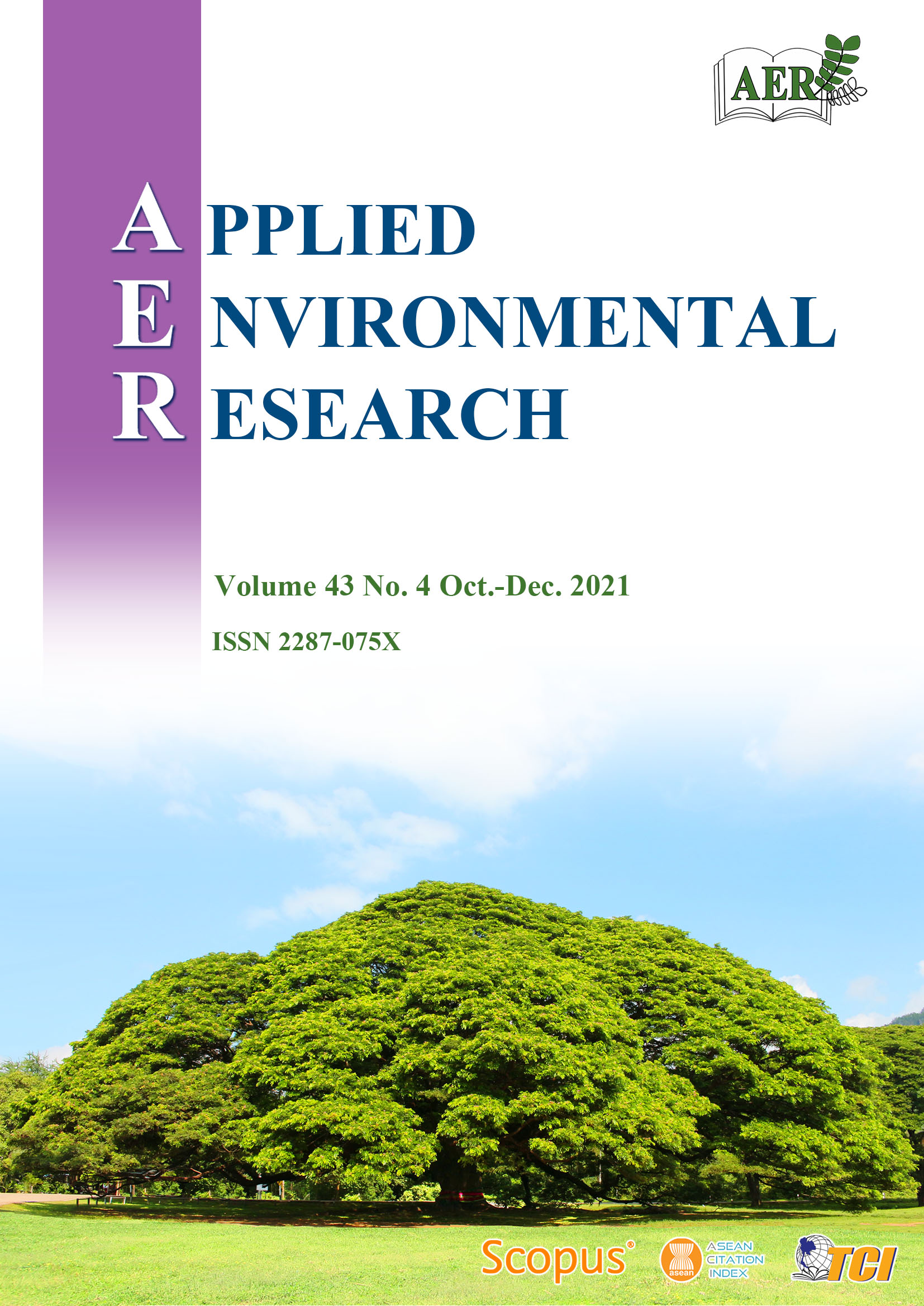Source Contribution of 1,3 Butadiene in the Vicinity of Petrochemical Industrial Area
Main Article Content
Abstract
Emissions and ambient concentrations of 1,3 butadiene released from the synthetic rubber industries in the largest petroleum and petrochemical complex in Thailand were evaluated in this study. The industrial emissions in this analysis were those emitted from process fugitive, combustion stack, flare, and wastewater treatment facility. It was found that wastewater treatment units were the largest emission source among other potential sources. The contribution of emission from wastewater treatment plants were about 92% of total 1,3 butadiene emission. The extent and magnitude of 1,3 butadiene in ambient air were further evaluated through the simulation of AERMOD dispersion model using these emission data together with local meteorological and topographical characteristics. Predicted annual 1,3 butadiene concentrations at every receptor were lower than its ambient air quality standard (< 0.33 μg m-3). Source apportionment analysis was performed with the objective to reveal the contribution of each emission source to the ambient concentrations at each receptor. Analytical results indicated that wastewater treatment units were the major emission source affected to the environmental concentrations of 1,3 butadiene in the study area. Evaluation of the potential adverse health impact of this chemical revealed that there may be a potential carcinogenic risk from inhalation exposure of 1,3 butadiene. Therefore, an effort in controlling emission of 1,3 butadiene should be given the priority to effectively manage the level of this compound in the environment.
Article Details

This work is licensed under a Creative Commons Attribution-NonCommercial 4.0 International License.
Published articles are under the copyright of the Applied Environmental Research effective when the article is accepted for publication thus granting Applied Environmental Research all rights for the work so that both parties may be protected from the consequences of unauthorized use. Partially or totally publication of an article elsewhere is possible only after the consent from the editors.

